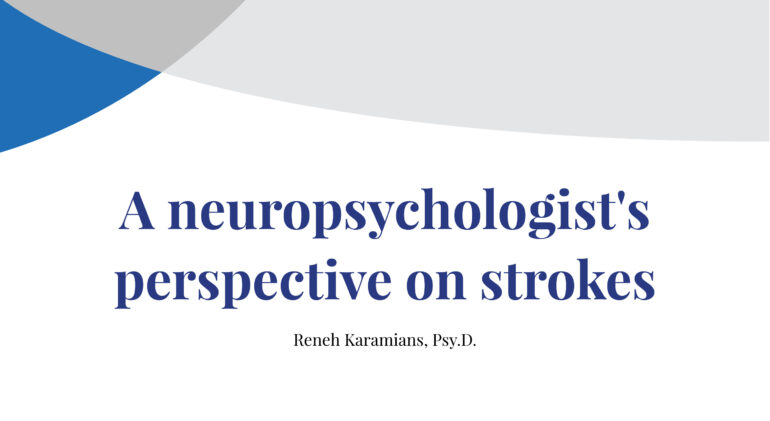As a neuropsychologist, I often get asked about stroke. Unfortunately, this typically happens after the individual’s loved one has experienced a stroke.
It is crucial to know the signs and symptoms of stroke and to be informed about how to intervene should the worst happen. Before we discuss that, we should talk a bit about what the different kinds of stroke are.
2 Common Types of Stroke
There are many types of strokes, but two are the most common.
The first is called an ischemic stroke. You can think of an ischemic stroke as similar to a clogged pipe. Just like a kitchen sink can get clogged, our arteries can become clogged if there is too much fatty buildup inside them. When this happens, the blood flow is slowed or stopped altogether. An ischemic stroke occurs when this type of clog happens in a small vessel of the brain. Most of the time, however, ischemic strokes occur due to an embolism, which is just a $64,000 word for a piece of fatty tissue that breaks off from within one of the larger arteries in the body, such as those within the legs, and works its way up to the brain where it clogs the small vessels.
Another kind of stroke is what we call a hemorrhagic stroke. Rather than a clogged pipe, you can think of a hemorrhage like a burst pipe. This is when an artery within the brain bursts, and blood begins to pour out. This causes pressure on the surrounding brain parts. A hemorrhage is a much more severe type of stroke and typically has poorer outcomes.
Signs and Symptoms of Stroke
Let’s talk about the signs and symptoms of stroke and what to do if a loved one experiences a stroke.
The primary symptoms we see with stroke are a face droop on either the left or right side of the face, weakness in the left or right arm, and difficulties producing or understanding speech. To remember these symptoms, you can think of the acronym FAST, which stands for face, arms, speech, and time.
What to Do When a Stroke Happens
If a loved one exhibits any of the FAST symptoms, it could mean they are experiencing a stroke and need immediate medical attention. Doctors have a saying: “With stroke, time is brain.”
The first thing to do is to call 911 while another person gathers all the individual’s medications. However, if you believe it would be faster, you can drive the individual to the hospital yourself. Be sure to take all their prescription drugs with you.
Once at the hospital emergency department, tell the first person you see that you have a patient with a potential stroke, and make sure to provide a proper timeline regarding how long ago the individual began to exhibit symptoms. This is necessary because, depending on how much time has passed, physicians will have different options available to them for treatment. If the individual has taken any form of blood thinner that day, make sure to inform the hospital staff.
A stroke is a very serious medical condition, and it is important to take preventative measures. Risk factors include obesity, smoking, poor cardiovascular health, high blood pressure that is uncontrolled, high cholesterol, and a history of transient ischemic attacks (mini strokes that resolve by themselves). If you or a loved one exhibits many or all these risk factors, speak to your family physician to take preventative measures.

